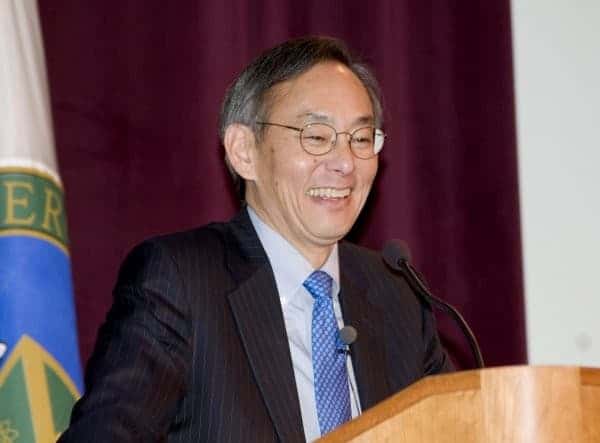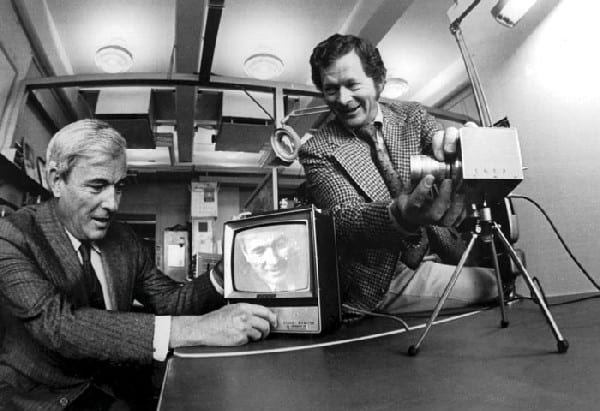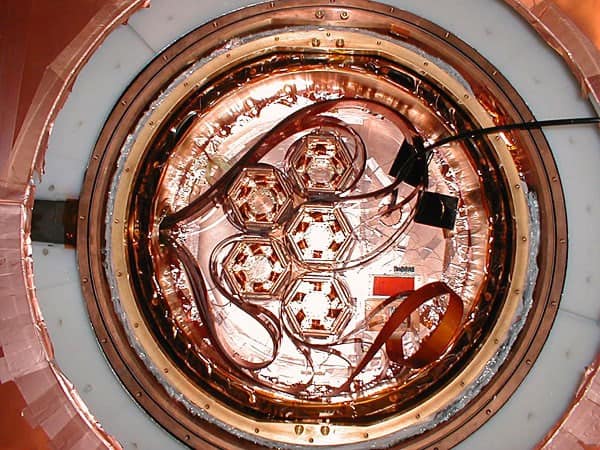2009 was another colourful year in the world of physics. The following images are offered as snapshots of the people and the breakthroughs that have helped to define the landscape of physics this year.

Back in January, Nobel-prize winning physicist Steven Chu was sworn in as secretary of the US Department of Energy, making him the first working scientist to head the department since it was created in 1977.
2009 was the International Year of Astronomy, and with all the festivities came another gallery of awe-inspiring images. In February, a group of researchers in Japan released this gravitational map of the Moon using data obtained from the SELENE mission, which was launched in 2007.
More than 400 exoplanets – that is, planets orbiting stars other than our Sun – are now officially catalogued and new planets are being discovered all the time. In February, the French CoRoT space telescope detected the first solid exoplanet CoRoT-7b. The rocky, and therefore “Earthlike”, nature of the planet was confirmed in a paper published in September.
2009 was also “Darwin Year” in celebration of the 200th anniversary of the birth of the evolutionary biologist and 150th anniversary of the publication of On the Origin of Species. Biophysics is now a field of research in full blossom as physicists continue to cultivate our understanding of the natural world. These spinning circles are Volvox algae – imaged by researchers in Finland and the UK – that are locked in a dance to increase their chances of fertilization (Phys. Rev. Lett. May).
In May, astronauts carried out a series of spacewalks to upgrade NASA’s Hubble Space Telescope. By September the 19-year old instrument had already returned a new bunch of breath-taking images including the Butterfly Nebula 3800 light-years away (left), and the Jet in Carina 7500 light-years away (right).
“From his wheelchair, he has led us on a journey to the farthest and strangest reaches of the cosmos. In so doing, he has stirred our imagination and showed us the power of the human spirit.” These were the words of Barack Obama as he presented the Medal of Freedom to Stephen Hawking at a ceremony at the White House in August. The US president described Hawking as “an agent of change”, and someone who “saw an imperfect world and set about improving it, often overcoming great obstacles along the way”.
Physicists in Switzerland and the Netherlands unveiled a new form of atomic force microscopy (AFM) capable of identifying individual atoms within a molecule. In a paper published in August they revealed this image of a pentacene molecule where the hexagonal shapes of the five carbon rings are all clearly resolved for the first time.
Despite all the hot air, the world’s leaders have failed to cobble together any meaningful climate deal as negotiations broke down at the UN climate conference in Copenhagen earlier this month. If binding emission targets cannot be agreed in the coming year then governments may look increasingly to a “third way” – engineering the climate such as removing carbon dioxide from the atmosphere. In September, the UK’s Royal Society published a report that looks at different geoengineering options, including constructing giant sunshades in space that can reflect the Sun’s rays and introducing iron into the world’s oceans to rapidly increase the amount of phytoplankton that consume carbon dioxide.
Nearly half a century after their pioneering work, three optics researchers shared this year’s Nobel Prize for Physics, announced in October. Charles Kao from the Chinese University of Hong Kong won his share for his work on the transmission of light in optical fibres, which has allowed a revolution in telecommunications. The other half of the SEK10m prize money was split between Willard Boyle and George Smith, both from Bell Laboratories in the US, who won for inventing the charge-coupled device (CCD) – an imaging semiconductor circuit that forms the basis of digital cameras.
Working with a cartoonist, a group of physicists in Switzerland and Denmark produced this graphic to represent their new device – a Cooper-pair splitter. They created a “Y-junction” from a tiny piece of superconducting material that can split a pair of entangled electrons – particles that share a much closer relationship than is possible in classical physics. The device should pave the way for tests of the so-called non-locality of quantum mechanics in the solid state.
After beginning 2009 in disrepair, the Large Hadron Collider (LHC) completed a dramatic turn-around this year by becoming officially the world’s most energetic collider. Beams of protons were carefully re-injected in November and the energies were raised. Then, on the evening of 8 December, the LHC achieved for the first time 2.36 TeV collisions thus breaking the record previously held by the Tevatron at Fermilab in the US.
For weeks the bloggers speculated feverishly.Then, last Friday the results were finally released – had the CDMS-II experiment made the first bona fide detection of dark matter? . Well, frustratingly, we’re still not quite sure. In a preprint submitted to the arXiv preprint server last Thursday, the US collaboration claim to have detected two “events” that are characteristic of dark-matter constituents known as weakly interacting massive particles, or WIMPs. However, they point out that there is a one-in-four chance that these events could be background noise. This will surely be one of the debates that shapes the landscape of fundamental physics in 2010.














